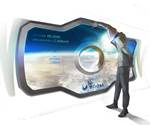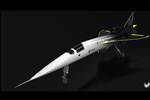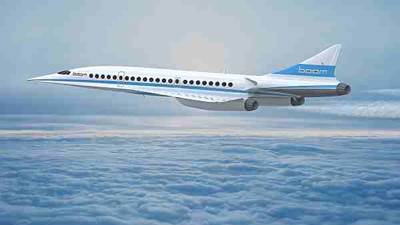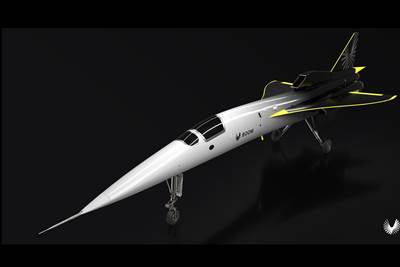Boom rolls out supersonic test aircraft XB-1
Highlighting a 71-foot-long fuselage, carbon fiber composite airframe and a host of other notable features, the demonstrator will now be headed for its ground test program and a 100% carbon-neutral flight test in 2021.
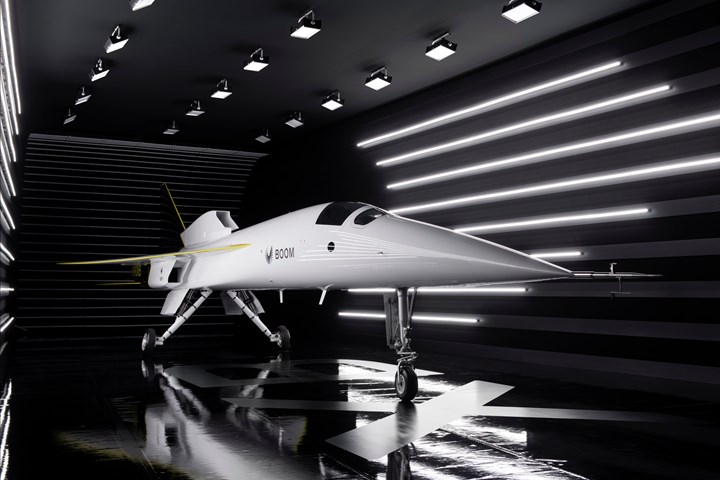
Photo Credit: Boom Supersonic
On Oct. 7, Boom Supersonic (Denver, Colo., U.S.) unveiled its now fully-assembled supersonic (faster than sound) 1/3-scale demonstrator, XB-1. XB-1 is the world’s first independently developed supersonic jet and, according to Boom Supersonic, will demonstrate key technologies for Overture which the company has its own goals for, including a demonstrator build by 2022, rollout in 2025 and an aim to begin carrying passengers by 2029.
During the rollout, it was announced that the XB-1 will now complete its ongoing, extensive ground test program before heading to Mojave, California, in 2021 for the flight test. At the same time, the company says it will finalize Overture’s propulsion system and conduct wind tunnel tests to validate aircraft design. Boom says that the flight test program will be 100% carbon-neutral.
“Boom continues to make progress towards our founding mission — making the world dramatically more accessible,” says Blake Scholl, Boom founder and CEO. “XB-1 is an important milestone towards the development of our commercial airliner, Overture, making sustainable supersonic flight mainstream and fostering human connection.”
During the rollout, the company highlighted the demonstrators more notable features. For example, XB-1’s 71-foot-long fuselage has been optimally shaped for high-speed aerodynamic efficiency, and the delta wing balances low-speed stability at takeoff and landing with high-speed efficiency.
Composites are also an important part of this supersonic aircraft. Boom emphasized a carbon fiber composite airframe. More specifically, the fuselage, wings, vertical and horizontal tail, inlets, ailerons and rudder incorporate Toray Advanced Composites’ (Morgan Hill, Calif., U.S.) TC350-1 toughened epoxy prepreg reinforced with IM7 carbon fiber, all contributing to the aircraft’s strength and rigidity, even under high temperatures and stresses of supersonic flight.
Propulsion is provided by three J85-15 engines, designed by General Electric (Boston, Mass., U.S.), provide more than 12,000 pounds of thrust, which will reportedly enable XB-1 to fly at breakthrough supersonic speeds. A high-resolution video camera and cockpit display give pilots a virtual window through the nose says Boom, providing superior runway visibility for landing.
The XB-1 also includes 21 flight hardware components manufactured by Velo3D's (Cambell, Calif., U.S.) Sapphire 3D metal printer.
"Aviation hardware is especially difficult to manufacture with 3D metal printing, due to challenging aerodynamic designs that must be balanced with superior durability and high temperature requirements," says Benny Buller, CEO and founder of Velo3D. "Velo3D's technology allows the production of lightweight, complex designs for mission-critical applications in the toughest operating conditions. Our partnership with Boom is truly an advancement for the metal AM industry, and XB-1 supersonic aircraft is a game-changer for the aviation industry."
Boom Supersonic and Velo3D announced a partnership in 2019 to manufacture complex flight hardware to build XB-1, and ran a series of qualification trials on Velo3D's Sapphire system. The printed titanium parts are used for engine hardware, the environmental control system and structural components. Characteristics of the geometric designs include tall, thin walls with high aspect ratios, which are are said to be inherently difficult to manufacture with either traditional processes such as welding and casting, or even most existing 3D printing technologies. Velo3D's SupportFree printing process has enabled unprecedented design freedom and quality control, eliminating manufacturing constraints to innovation in aircraft design.
Speaking at the roll-out were: NASA leaders and astronauts: Major Gen. Charles F. Bolden, Jr, USMC (Ret.) and 12th NASA administrator and Caption Robert “Hoot” Gibson, USN (Ret.); chief Concorde pilot for British Airways, Captain Mike Bannister; Supersonic: The Design and Lifestyle of Concorde author Lawrence Azerrad; U.S. Air Force Brig. General Ryan Britton; chairman of Japan Airlines, Yoshiharu Ueki; strategy director at Rolls-Royce Civil Aerospace, Simon Carlisle; founder of Prometheus Fuels, Rob McGinnis, a company producing net zero carbon jet fuel; Boom investors, Sam Altman, Emerson Collective, John Collison, Reid Hoffman, Jeff Holden, Greg McAdoo and Sir Michael Moritz; and Boom advisors, Dr. Ray O. Johnson and Dr. Lourdes Maurice.
Related Content
Price, performance, protection: EV battery enclosures, Part 1
Composite technologies are growing in use as suppliers continue efforts to meet more demanding requirements for EV battery enclosures.
Read MorePlant tour: Albany Engineered Composites, Rochester, N.H., U.S.
Efficient, high-quality, well-controlled composites manufacturing at volume is the mantra for this 3D weaving specialist.
Read MoreInfinite Composites: Type V tanks for space, hydrogen, automotive and more
After a decade of proving its linerless, weight-saving composite tanks with NASA and more than 30 aerospace companies, this CryoSphere pioneer is scaling for growth in commercial space and sustainable transportation on Earth.
Read MoreThe lessons behind OceanGate
Carbon fiber composites faced much criticism in the wake of the OceanGate submersible accident. CW’s publisher Jeff Sloan explains that it’s not that simple.
Read MoreRead Next
Is supersonic flight making a comeback?
Boom Technology (Denver, CO, US), a 2014 start-up aircraft developer, is in the process of building the XB-1, a flying 1/3-scale demonstrator of its supersonic (faster than sound) commercial aircraft.
Read MoreBoom Supersonic, JPA Design to develop interior for Overture airliner
Boom Supersonic’s Overture Mach-2.2 supersonic aircraft will travel twice the speed of regular aircraft.
Read MoreBoom Supersonic to roll out XB-1 demonstrator at virtual event Oct. 7
The supersonic jet, incorporating carbon fiber construction, is slated for first flight in 2021.
Read More


